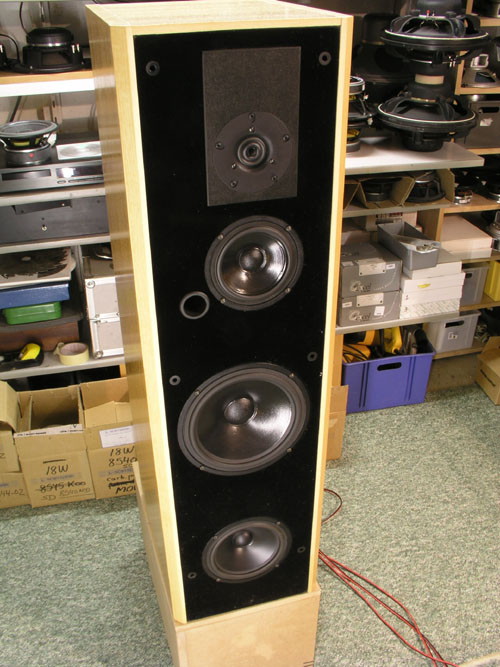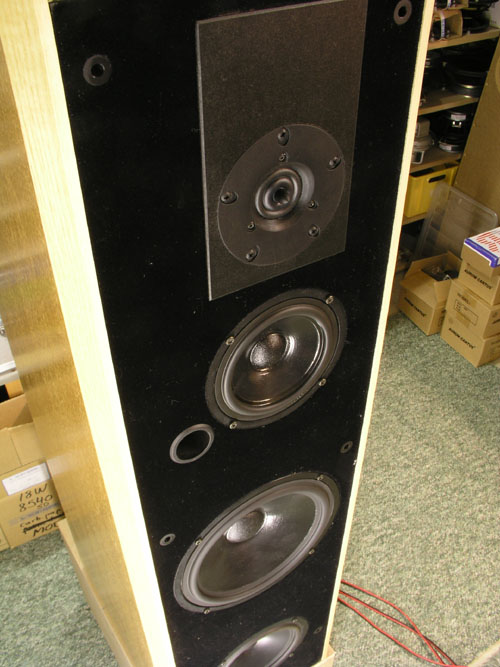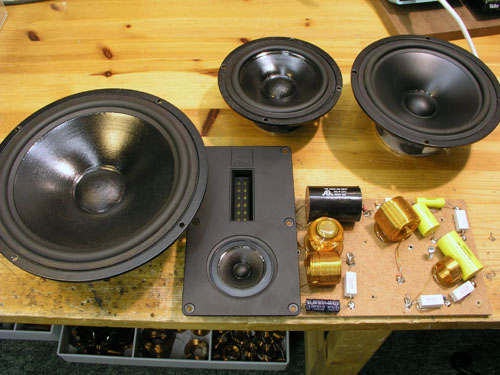 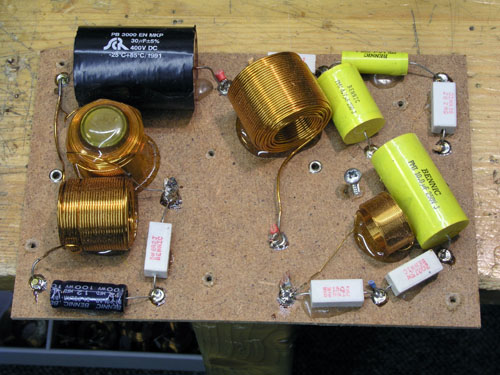
Left: Dali 800 drivers and crossover. Right: Dali 800
crossover close-up.

I had a mail from a guy seriously questioning the
existence of an "800" model, as this is not listed on the Dali website
on discontinued speakers, only the 810. But above is the label on the
rear of the cabinet, so maybe this was only in production for a short
period of time and replaced by the 810, although they appear to have the
same drivers except the midrange driver now has a center phase plug.
Download file
here.
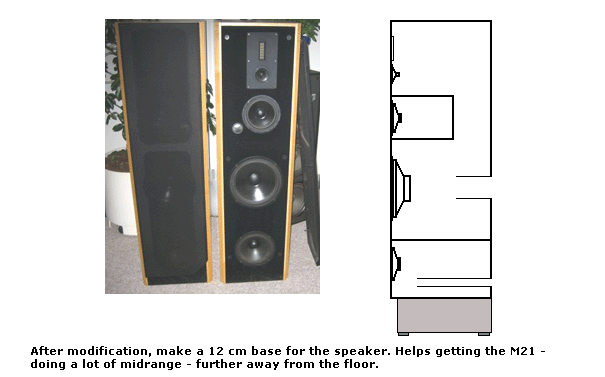
Dali 800
crossover, as-is.

Dali 800 crossover as-is.
Dali 800 measurements, as-is:
(planar
super-tweeter not included)
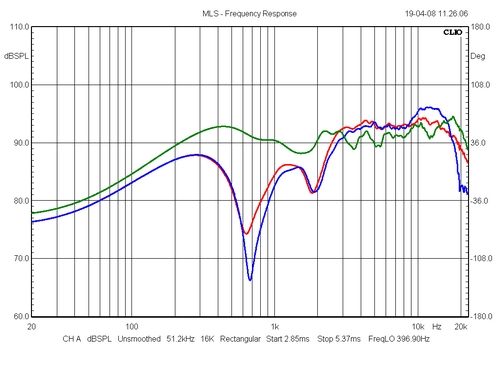
Red and blue was what was
seen on the screen the first time I measured the
Dali 800 at tweeter height, 1 meter distance. I
thought something was wrong with the CLIO.....
Moving the microphone up and down didn't change
much, so initially I though the mid was connected
with wrong polarity but changing the polarity of
mid (and tweeter) didn't make things better.
"Hmm....we'll deal with this later", I
told Michael. I wanted to see the impedance
profile of this speaker to know why 8 push-pull
watts is more than enough to drive this speaker.
(Disregard green graph = one of
the new crossovers tested)
|
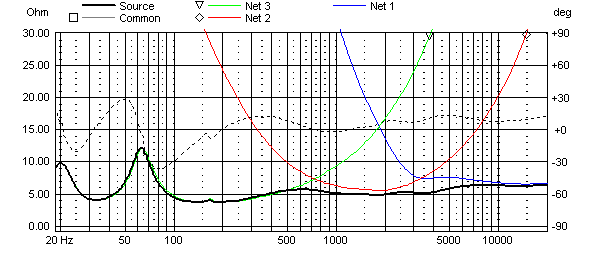 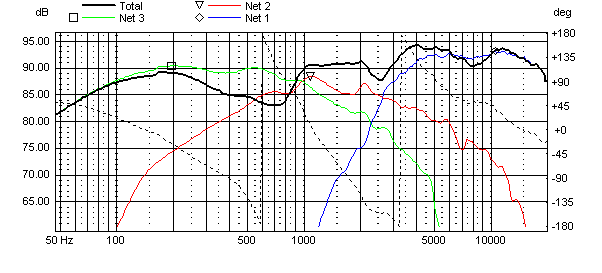
Above left: Above the impedance of
the Dali 800, as-is. Indeed an easy load! Flat in
the entire 100-20000 Hz range and with modest
phase angles in the bass region. No wonder the
Joplin doesn't complain when driving these
speakers excessively loud. 4 ohms minimum.
Measuring the impedance of the P17 and M21
revealed same vent tuning, around 32 Hz. Hmm....
I had expected different box tunings to smooth
the impedance well knowing this may impact the
impulse response negatively, but don't expect
commercial speakers to fit in with all nice math
associated with speaker building.
Frd* and zrd* files were created
for all drivers to start simulation and see what
this speaker was all about.
*: frd and zrd files are raw data
files of frequency response (including minimum
phase) and impedance of drivers driven without
any crossover attached. These files are imported
into LspCAD for crossover simulation.
Above right, simulated frequency
response at 1 meter distance. Not too well in
accordance with actual measurements due to P17
and M21 being connected in parallel for creating
the response files. Having the P17 some 25 cm
lower than the M21 probably makes crossover lobing more severe than seen here.
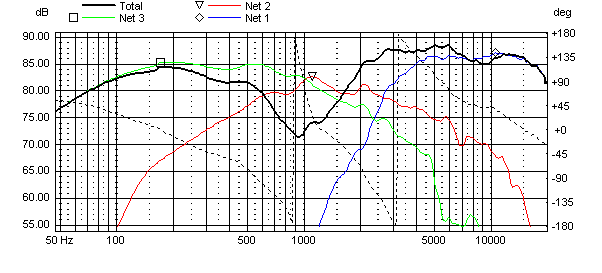 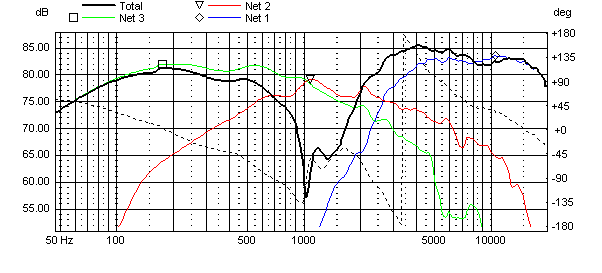
Above left:
Simulated response at 2 meters distance.
Above right:
Simulated response at 3 meters distance.
This starts looking like 1 meter readings at tweeter
height.
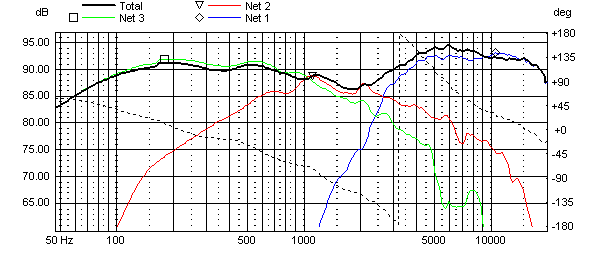
Simulated response at infinite distance. The rationale behind this
exercise is to see what this crossover does to
the overall performance at different distances.
Except for the tweeter all drivers are run from
1st order crossovers and as said, crossover
lobing is expected to be severe - and indeed it
is.
As can be seen, the tweeter response is way too high and
I wonder how this would have looked with the planar included. We know
that treble sells, but this seems a bit over the top.
Dali 800, new
crossover
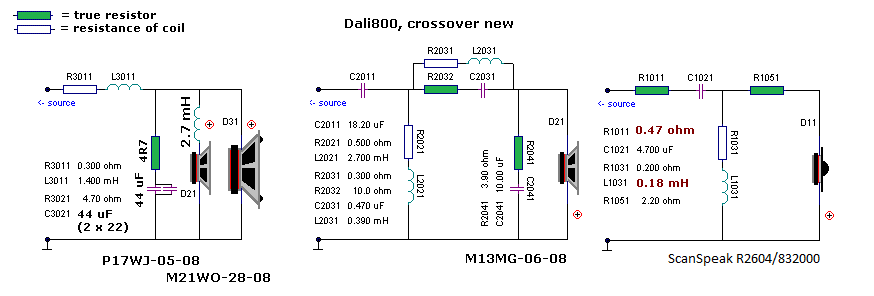
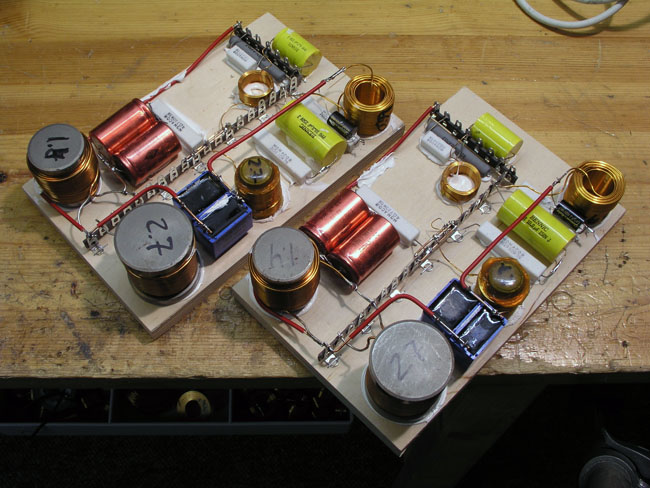
Low-budget renovation. Some of the original coils were
un-wound to suit mid and tweeter section.
Two new low-ohm coils were used for bass drivers.
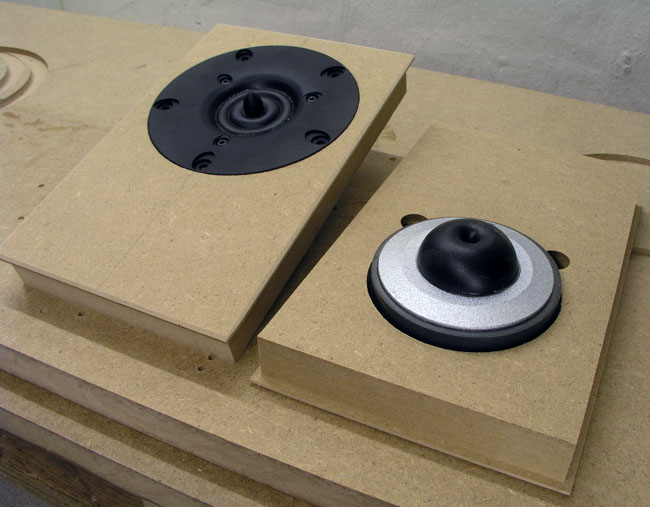
Above the new tweeter panel. No further
dimensions given.
New Crossover Kit
Discontinued as kit from Jantzen Audio. Source components
locally.
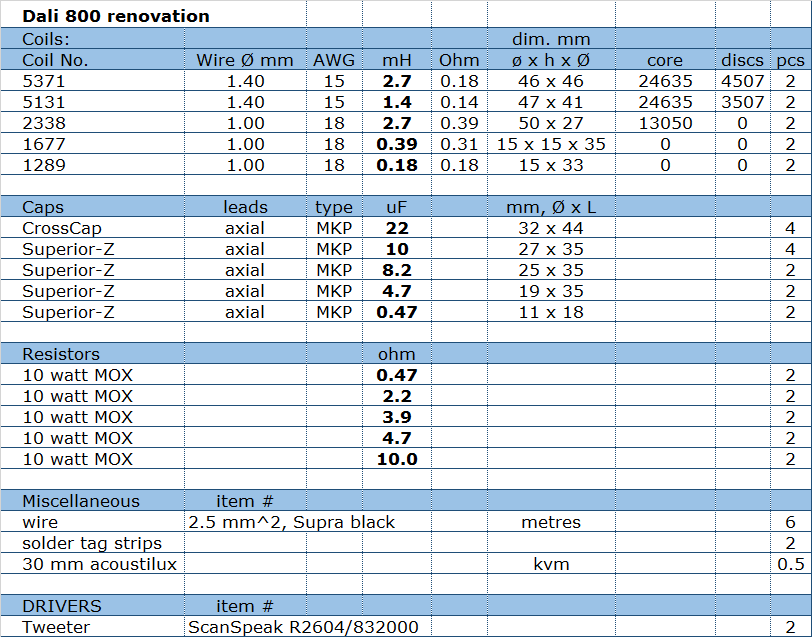
All technical
questions to
troels.gravesen@hotmail.com
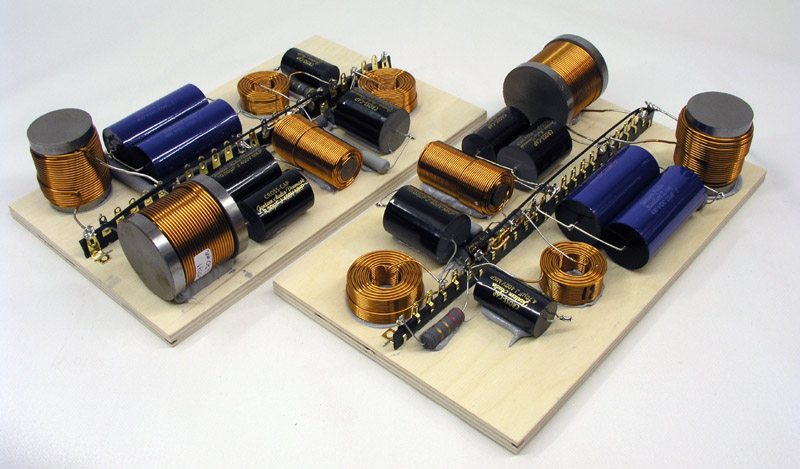
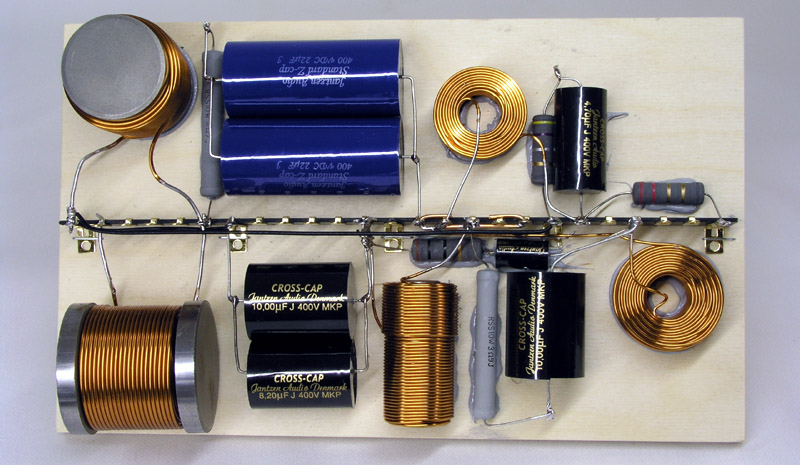
New crossover made for client from the Jantzen kit.
Click image to
view large.

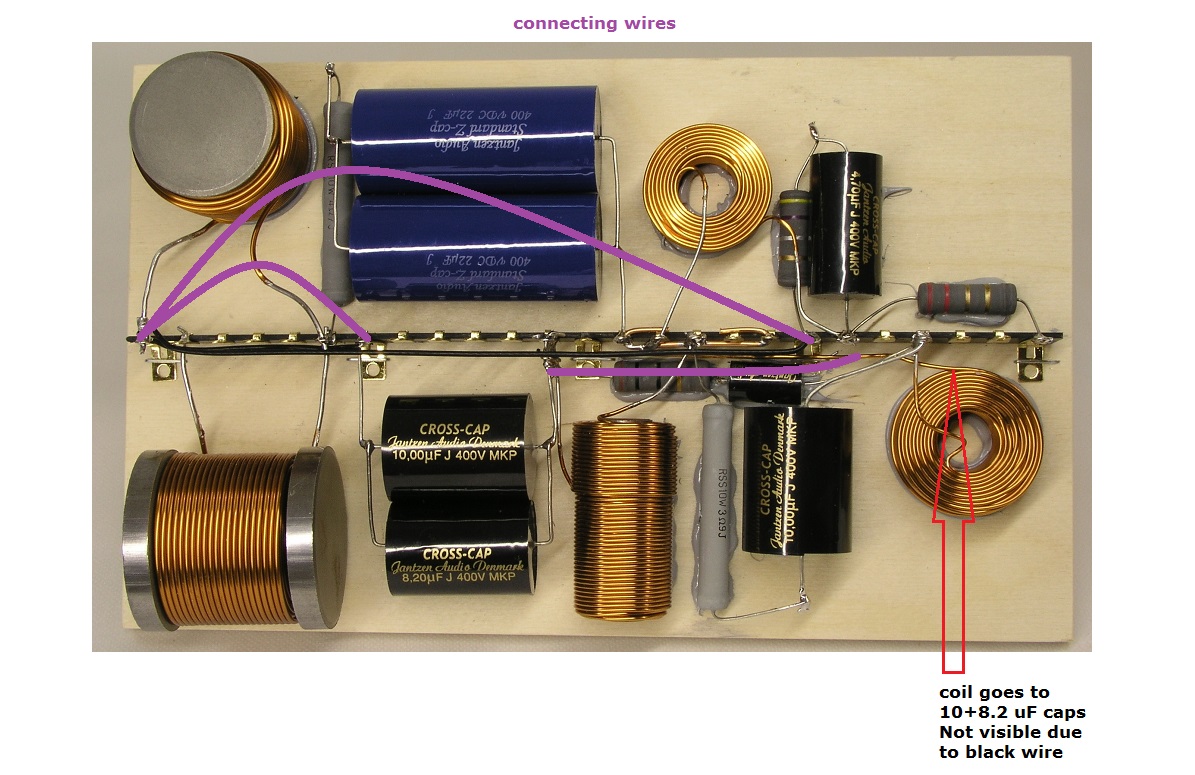
Some additional info on wiring
Response from another client:
Hei Troels. Takker for fine delefiltre.
Lyden ble utrolig mye bedre med ditt oppsett. Mvh.
Arne/Norway
Measurements, new
crossover:
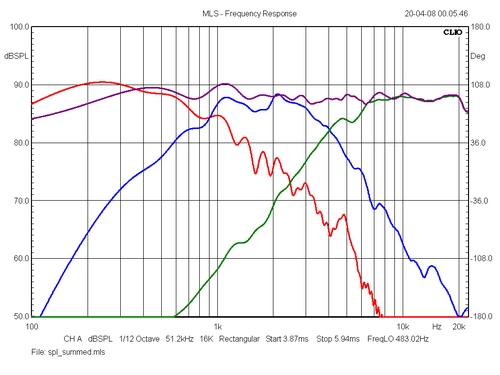 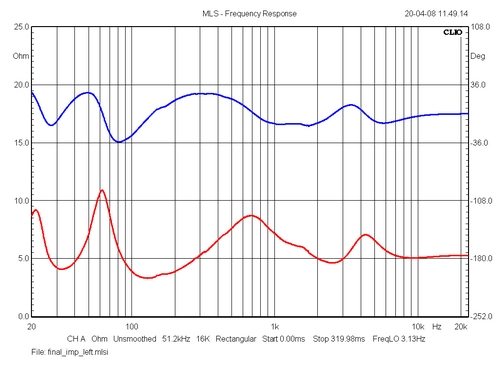
Left: Summed response and response from individual
drivers. Points of crossover around 800 Hz and 4 kHz.
Right: Impedance of system from new crossover. Not as
smooth as the original, but Michael's 2A3 PP didn't
object.
Conclusion
|
First
of all the Dalis need to be lifted some 10-14 cm
from the floor. Having the M21 handling most of
the midrange the overall performance is improved
from lifting the whole speaker (- sorry, forgot
to take a picture).
Setting
up the speakers again was a pleasant experience.
The level of transparency is vastly improved and
there's an overall balanced sound from the modded
system. These Vifa drivers have so good qualities
I don't hesitate to recommend a full renovation;
that is:
1.
remove all drivers, crossover and damping
material.
2. add bracing to the rear panel.
3. add bitumen pads to the M21 cabinet. (the
cabinet is mostly made from decent 25 mm
chip-board materials.
4. use cored, low-resistance coils to the bass
section to maintain sensitivity.
5. good caps would take 2 x 0.47 uF, 2 x 4.7 uF,
2 x 8.2 uF and 4 x 10 uF and possibly set you
back some 200 US $ excl. VAT depending on brand
and supplier.
6. re-install damping material and 0.25 sqm 30 mm acoustilux to the M21 driver enclosure, half at
top of the cabinet and the other half right
behind the driver - on top of the crossover.
7. Buy a pair of ScanSpeak R2604/832000 tweeters and you
have a speaker that will outperform most modern
2-2½-way systems.
Enjoy!
|
The Foster cone and planar tweeters
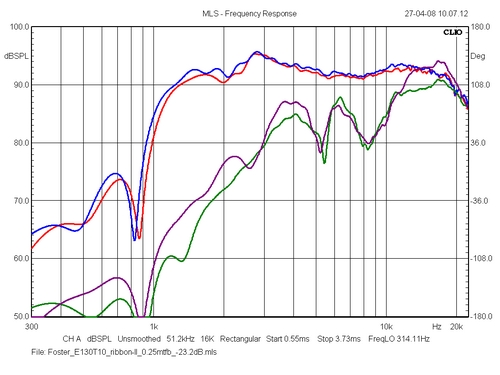 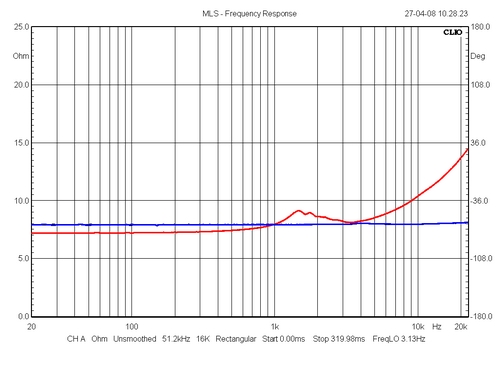
Left: SPL response/2.8V
from the two cone tweeters (red and blue). Planar
tweeters: Green/purple. Right: Impedance plot of
cone tweeter (red) and planar (blue).
Now, this planar is marketing
gimmick and the best you can do is disconnect it.
Throw it out! It's a phzzzz-thing supposed to
caress you eyes more than your ears.
|
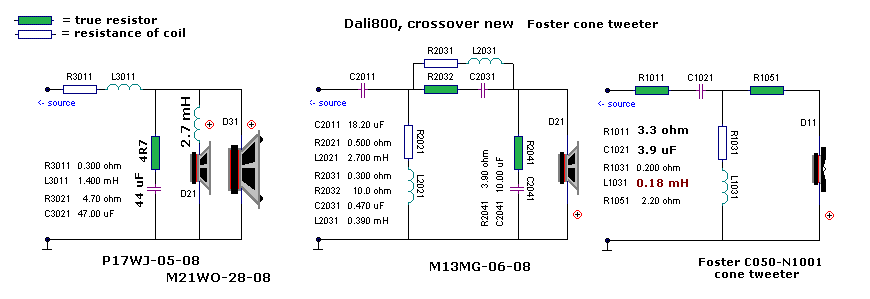
Disconnect the planar and use the cone tweeter like this.
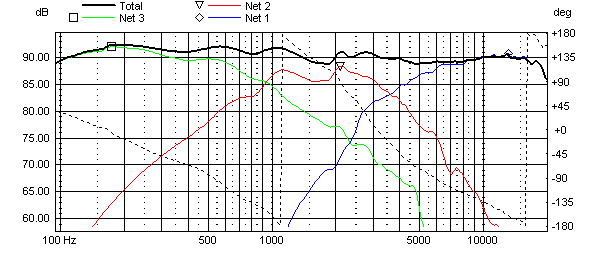
Simulated response from Foster cone tweeter set-up.
Not tested and won't be, but I'm sure this will work
fine.
Return to intro
page.
|
